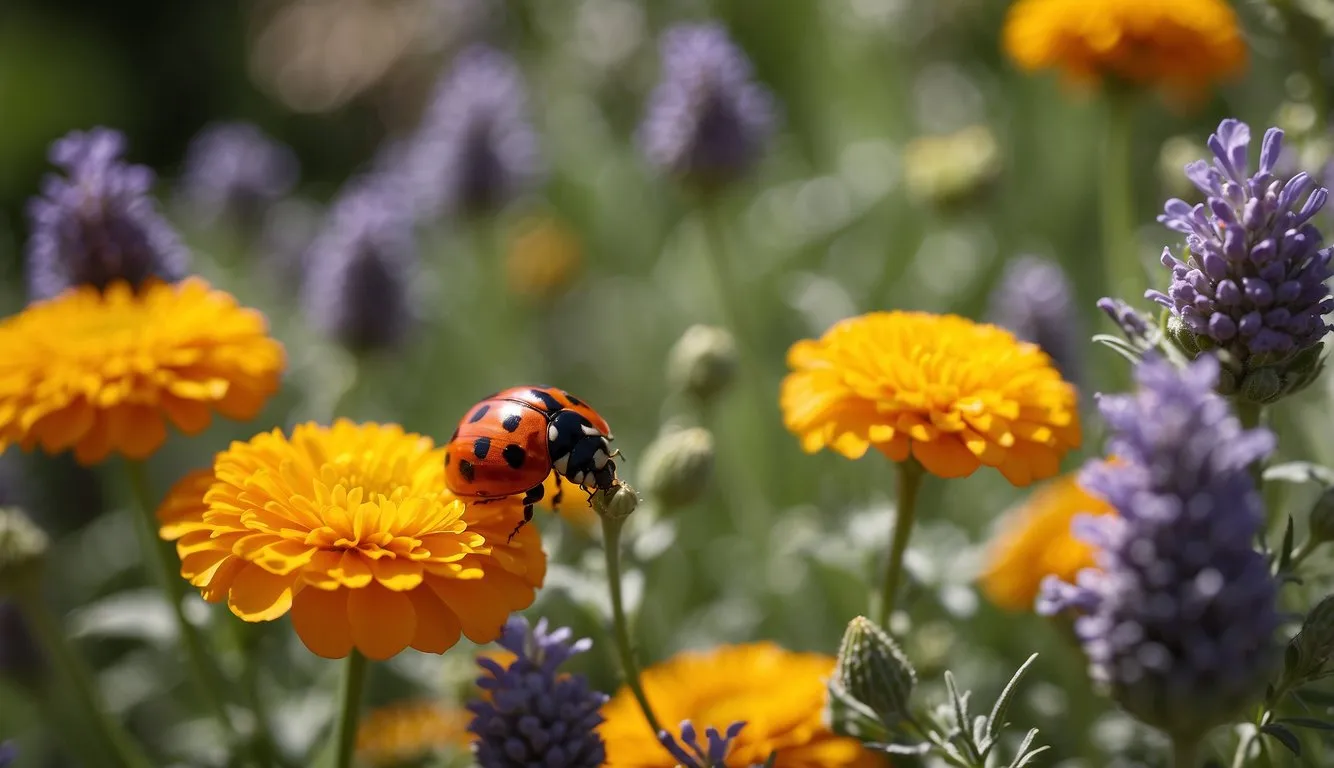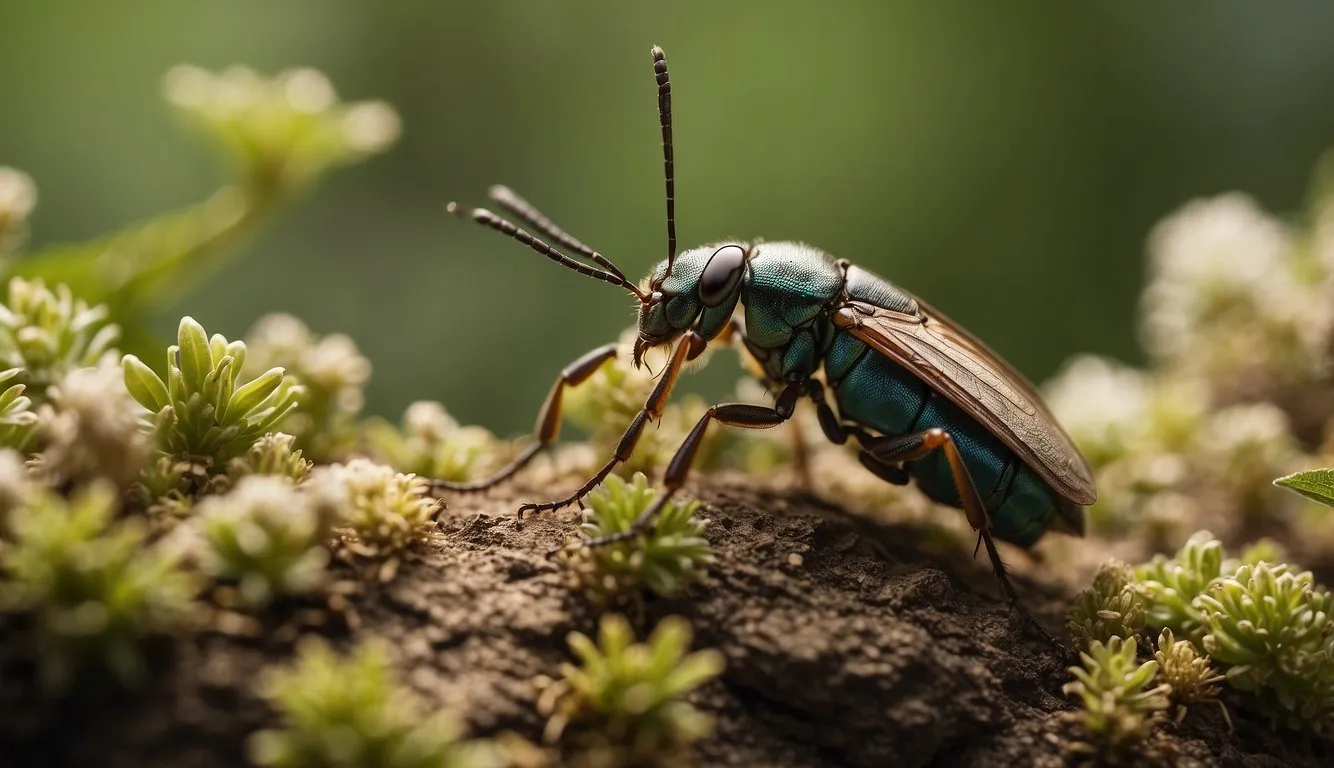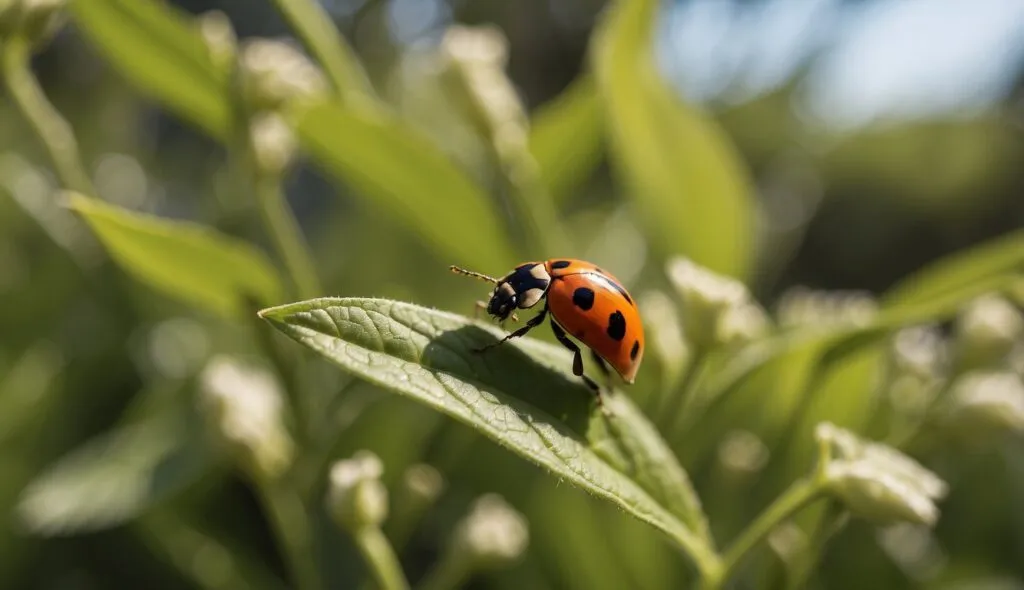As we become more conscious of the impact our actions have on the environment, it’s important to consider sustainable alternatives to traditional pest control methods. Sustainable bug control is a crucial part of sustainable agriculture and sustainable development goals. By using eco-friendly pest control methods, we can protect our crops and homes from pests while minimizing the environmental impact of our actions.

Understanding pests and their impact on the environment is the first step in implementing sustainable bug control methods. Pests can cause damage to crops and homes, leading to economic losses and health risks. However, traditional pest control methods often involve the use of harmful chemicals that can harm the environment and non-target species. Integrated pest management strategies offer a more sustainable approach to pest control, which involves a combination of prevention, monitoring, and control methods that minimize the use of harmful chemicals.
Table of Contents
Key Takeaways
- Sustainable bug control is an important part of sustainable agriculture and sustainable development goals.
- Understanding pests and their impact on the environment is crucial in implementing sustainable bug control methods.
- Integrated pest management strategies offer a more sustainable approach to pest control.
Understanding Pests and the Environment
As we strive towards sustainable living, it is important to understand the relationship between pests and the environment. Pests are organisms that compete with us for resources and can cause damage to our crops, homes, and health. However, they are also an important part of the ecosystem and play a crucial role in maintaining biodiversity.
The environment is the natural world around us, including the soil, air, water, and all living organisms. The health of the environment is essential for our survival and well-being. Soil is the foundation of our food system and supports plant growth, which in turn supports the entire food chain. Ecosystems are complex webs of interactions between living organisms and their environment, and biodiversity is the variety of species and ecosystems that make up our planet.
Climate change and pollution are two major environmental issues that have a significant impact on pests and their behavior. Changes in temperature and precipitation patterns can affect the distribution and abundance of pests, while pollution can disrupt their natural habitats and food sources.
To achieve sustainable bug control, we must consider the impact of our actions on the environment. Chemical pesticides can be harmful to non-target organisms and can pollute the soil and water. Therefore, we must explore alternative methods of pest control that are both effective and environmentally friendly. This can include the use of traps, pheromone-based control, and natural predators.
In summary, understanding the relationship between pests and the environment is crucial for achieving sustainable bug control. By adopting environmentally friendly methods, we can protect our health, the environment, and promote biodiversity.
Integrated Pest Management Strategies
At the core of sustainable bug control is Integrated Pest Management (IPM). This approach involves using a combination of methods to prevent and control pest infestations while minimizing the use of harmful chemicals. IPM strategies include Biological Control Methods, Chemical and Natural Pesticides, Cultural Control Practices, and Mechanical and Physical Barriers.
Biological Control Methods
Biological control methods involve introducing natural predators and beneficial insects to control pest populations. This method is effective in reducing pest populations without the use of toxic chemicals. Common biological control methods include the use of parasites, birds, and companion planting.
Chemical and Natural Pesticides
While chemical pesticides are still used in some cases, the focus is shifting towards natural insecticides like neem oil, essential oils, and other non-toxic methods. Chemical pesticides can be harmful to the environment, pollinators, and other beneficial insects. Resistance to these chemicals is also a growing concern.
Cultural Control Practices
Cultural control practices involve modifying the habitat to make it less hospitable to pests. This includes crop rotation, sanitation practices, and exclusion methods. By removing pest habitats and food sources, pest populations can be reduced without the use of harmful chemicals.
Mechanical and Physical Barriers
Mechanical and physical barriers are another effective way to prevent pest infestations. This includes installing screens, sealing cracks and crevices, and using traps. These methods are effective in preventing pests from entering the home or garden, reducing the need for toxic chemicals.
Adopting a holistic approach to pest management is essential in sustainable bug control. By using a combination of methods, we can reduce the need for toxic chemicals and protect our environment, pollinators, and beneficial insects. A pest control provider that specializes in green pest control and sustainable solutions can help homeowners and businesses implement effective IPM strategies that are safe and effective.
Pest Control in Agriculture
As farmers, we understand the importance of pest control in agriculture. Pests such as insects and aphids can cause significant damage to crops, leading to lower yields and economic losses. However, the use of chemical insecticides can have negative impacts on the environment, including the development of resistance in pests and harm to non-target organisms.
To address these issues, we advocate for the use of natural insecticides and biological control methods. Natural insecticides, such as neem oil and pyrethrin, are derived from plants and are less harmful to the environment than synthetic chemicals. Biological control involves the use of natural enemies of pests, such as parasitic wasps, to control pest populations. This method is effective and sustainable, as it does not involve the use of harmful chemicals.
One example of a sustainable pest control solution is the use of Bt (Bacillus thuringiensis), a naturally occurring soil bacterium that produces proteins toxic to specific pests. Bt is an effective and safe alternative to chemical insecticides and is commonly used in organic farming.
We also recommend specific pest management strategies, such as crop rotation and the identification and sealing of pest entry points. Crop rotation involves alternating the crops grown in a field to prevent the buildup of pest populations. Sealing pest entry points, such as gaps in walls or doors, can prevent pests from entering buildings and causing damage.
In summary, pest control in agriculture is crucial for maintaining healthy crops and economic viability. However, the use of harmful chemicals can have negative impacts on the environment. We advocate for the use of natural insecticides, biological control methods, and sustainable pest management strategies to control pests effectively and safely.
Pest Control and Public Health

As experts in sustainable pest control, we understand the importance of public health in the management of insect pests. Insect pests can pose serious threats to public health by transmitting diseases such as malaria, dengue fever, and West Nile virus. It is, therefore, essential to control these pests to prevent the spread of diseases.
However, traditional pest control methods involving the use of toxic chemicals can also pose a significant risk to public health. The use of such chemicals can lead to environmental pollution and contamination of food and water sources. Additionally, exposure to these chemicals can cause adverse health effects in humans and animals.
To address these concerns, we advocate for the use of sustainable pest control methods that are non-toxic and environmentally friendly. Integrated pest management (IPM) is an ecologically friendly strategy that combines biological, chemical, physical, and cultural management strategies and practices. IPM minimizes the use of synthetic pesticides and the risks to the environment but strengthens ecosystem functioning and plant health.
Some of the non-toxic methods that we recommend for sustainable pest control include the use of pheromone traps, insect growth regulators, and biological control agents. Pheromone traps use the natural sex pheromones of insects to lure and trap them, while insect growth regulators target the developmental stages of insects to prevent them from reaching maturity. Biological control agents, such as predatory insects and nematodes, can be used to control pest populations naturally.
In conclusion, we believe that sustainable pest control is essential for protecting public health and the environment. By adopting non-toxic methods, we can effectively manage insect pests while minimizing the risks to human health and the ecosystem.
Economic and Ethical Considerations

When it comes to bug control, there are various economic and ethical considerations that we need to take into account. We need to ensure that the methods we use are not only sustainable but also cost-effective.
One of the main concerns with traditional pest control methods is that they can be quite expensive. However, with sustainable pest control, we can reduce the cost of bug control significantly. For example, using insect predators to control pests can be more cost-effective than using chemical pesticides in the long run.
In addition to being cost-effective, sustainable pest control methods are also more eco-friendly. By using natural predators, we can avoid the use of harmful chemicals that can pollute the environment and harm other beneficial insects. This is not only better for the environment but also for our health and well-being.
Furthermore, sustainable pest control methods align with the Sustainable Development Goals (SDGs) as they promote responsible consumption and production. By using eco-friendly pest control methods, we can help to reduce our impact on the environment and promote sustainable development.
Finally, we need to consider the ethical implications of bug control methods. Using chemical pesticides can harm not only the pests but also other beneficial insects and animals. By using sustainable pest control methods, we can ensure that we are not causing harm to other living beings and are being responsible stewards of the environment.
Overall, when it comes to bug control, we need to consider the economic, ethical, and environmental factors to ensure that we are using sustainable methods that are cost-effective, eco-friendly, and aligned with the SDGs.
Conclusion

In conclusion, sustainable bug control is an essential element of sustainable development goals. We have learned that sustainable pest control is a complex and challenging issue that requires a holistic and adaptive approach. By adopting integrated pest management and other eco-friendly practices, we can protect our homes and gardens from harmful pests while safeguarding the planet for future generations.
We have seen that eco-friendly methods of pest control offer a safe and effective alternative to conventional pesticides. By harnessing the power of nature and adopting sustainable practices, we can keep pests at acceptable levels using natural, non-toxic means. Integrated Pest Management is a comprehensive and environmentally sensitive approach to pest control that aims to reduce the use of pesticides and minimize their impact on the environment.
We must continue to explore and implement new methods of sustainable pest control to reduce the negative impact of conventional pesticides on our environment. We must also work together to raise awareness of the benefits of sustainable pest control and encourage others to adopt sustainable practices.
Overall, we are confident that sustainable bug control is a critical component of sustainable development goals. By working together and adopting sustainable practices, we can protect our homes and gardens from harmful pests while safeguarding the planet for future generations.
Frequently Asked Questions
What are the most effective eco-friendly pest control products currently available?
There are several eco-friendly pest control products currently available that are effective in controlling pests while reducing environmental impact. Some of the most effective products include diatomaceous earth, neem oil, garlic spray, and essential oils such as peppermint, eucalyptus, and lavender.
Which companies specialize in sustainable bug control solutions?
Several companies specialize in sustainable bug control solutions, including Rentokil, Green Pest Management, and Organic Control. These companies offer a range of services and products that are designed to control pests while minimizing environmental impact.
How can I implement sustainable pest control methods at home?
There are several ways to implement sustainable pest control methods at home. Some of the most effective methods include using eco-friendly pest control products, sealing cracks and gaps in your home to prevent pests from entering, and maintaining a clean and clutter-free home to reduce pest habitats.
What are the best practices for sustainable bug control in agricultural settings?
In agricultural settings, sustainable bug control practices include integrated pest management (IPM), crop rotation, and the use of beneficial insects to control pests. These practices help to reduce the use of pesticides and minimize environmental impact while still effectively controlling pests.
What are the advantages and disadvantages of sustainable pest management compared to traditional methods?
The advantages of sustainable pest management include reduced environmental impact, improved safety for humans and animals, and long-term effectiveness. The disadvantages include higher initial costs, the need for more frequent monitoring and maintenance, and the potential for slower results compared to traditional methods.
How do organic pesticides differ from conventional pesticides in terms of environmental impact?
Organic pesticides are made from natural ingredients and are typically less harmful to the environment than conventional pesticides. They break down more quickly and are less likely to accumulate in the soil or water, reducing the risk of long-term environmental damage. However, organic pesticides may not be as effective as conventional pesticides and may require more frequent applications.


